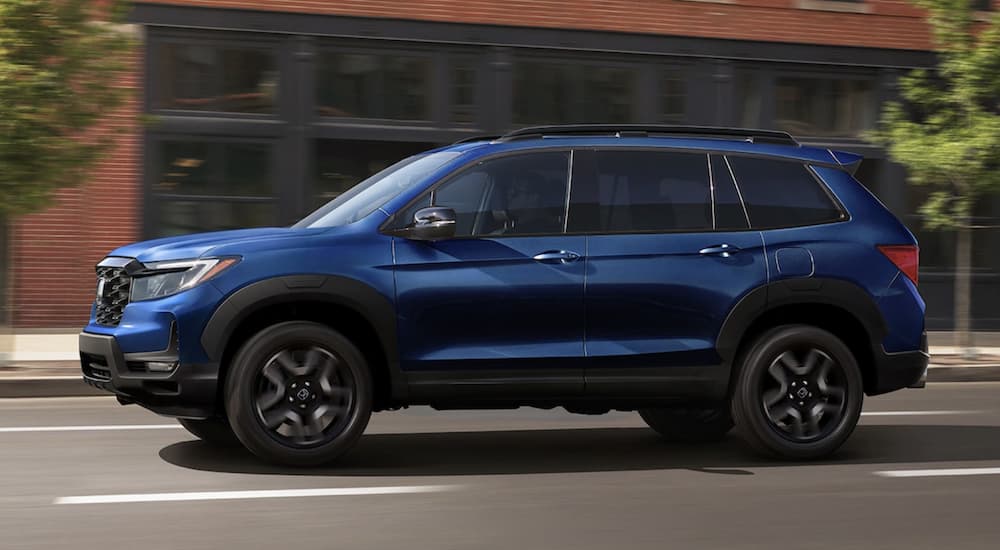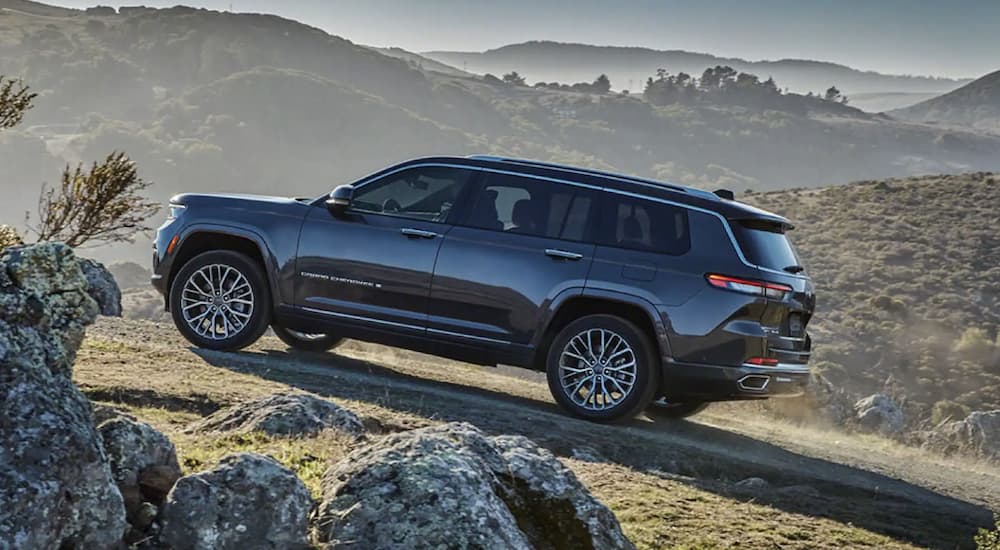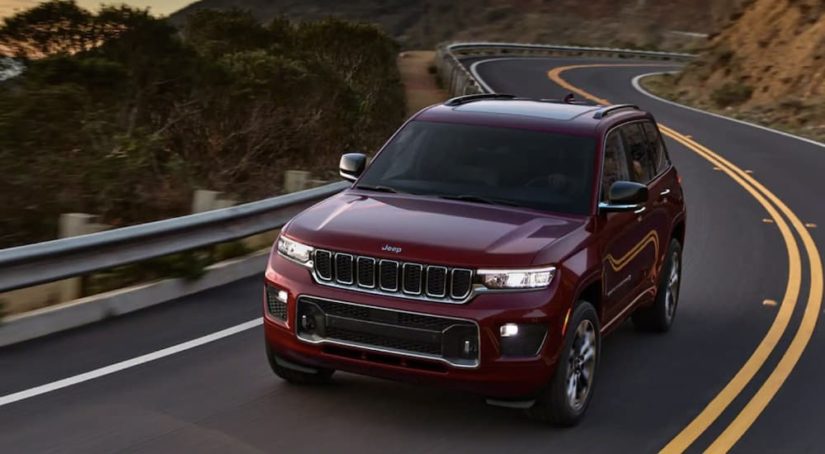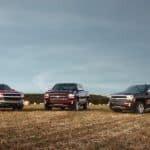Feeling overwhelmed as you wade through the bottomless pool of new SUVs to find what works for you? You’re not alone. Many major manufacturers offer multiple models with overlapping prices and features that compete with other manufacturers’ complex model lineups. Consider the number of choices with the 2022 Jeep Grand Cherokee WL vs 2022 Honda Passport, two of the most popular midsize SUVs.
It’s not just the variety of models that has consumers scratching their heads. The wildly popular Grand Cherokee WL, Jeep’s brand new, completely redesigned midsize SUV, now comes in seven trims, each with a handful of available equipment packages and engine options. By contrast, the Passport’s more manageable three-trim lineup with few add-ons seems easier to grasp. Fewer choices may seem easier, but easy isn’t always better.
If you’re lucky enough to know which SUV you want, that’s step one, but zeroing in on the specific trim and features takes a little more work and patience. Here’s a pro tip: you’re always better off if the SUV you want comes in multiple trims. That’s because an expansive trim lineup means more options and a broader price spectrum, both of which can save you money. Here’s a guide to trim logic, including a few insider tips for using multi-trim lineups to your advantage.
SUV Trim Lineups: Why Less Isn’t More
According to Psychology Today, we make approximately 35,000 choices every day. Terms like “analysis paralysis” and “decision fatigue” are now part of the modern lexicon, and they’re very real. We’re a culture of abundance. As you shop for an SUV, settling on a single model or two seems like the biggest hurdle, but it’s only the beginning. Next comes deciding on a trim.
Because we’re plagued with so many choices each day, it seems logical that simplified lineups are good things. In fact, the opposite is true. Consider the 2022 Honda Passport’s three-trim lineup: the EX-L, the TrailSport, and the Elite. Honda is notorious for skimping on equipment packages, instead stuffing tons of standard features on each trim.
There’s a method to Honda’s madness, which is fueled by exhaustive market research. Honda bundles popular features into each trim and uses pricing logic that encourages buyers to upgrade to higher-cost versions. Unfortunately, this means buyers often end up paying a lot more to capture a single must-have feature that isn’t available on a lower trim. For example, if you want a Wi-Fi Hotspot, you have to buy the most expensive Passport Elite. Prefer a nicer 10-speaker system? Same problem.
Succumbing to decision fatigue during the car-buying process means spending more than you should. On the surface, Honda’s simplified lineup seems like the more logical arrangement, but if you value choice and don’t want to end up overpaying for a bunch of equipment you don’t want or need, SUVs like the Jeep Grand Cherokee offer more customization opportunities.

Understanding Trim Logic
Manufacturers like Jeep take a different approach, offering multiple trims with more gradual price increases. Within each trim, Jeep bundles popular add-ons into logical packages. Let’s say you want to keep your budget under $45,000. You’d likely choose the base Jeep Grand Cherokee Laredo, which costs just under $40,000, but because you live somewhere with cold winters, you really want heated seats.
In Honda’s world, you’d have to upgrade to a much more expensive trim. Jeep gives you two options: upgrade to the more well-equipped Altitude trim for around $5,000 more, or simply choose a Laredo with the optional Luxury Tech Group I package for $1,400. You won’t get the leather seating found on the Altitude, but that wasn’t important to you anyway––the heated seats and steering wheel were what you wanted, and you got them without the massive price hike.
Jeep carefully structured its 2022 Grand Cherokee lineup to provide buyers with plenty of opportunities for customization. The automaker isn’t fond of feature-stuffing and jacking up prices. It takes time and research to devise the best trim and equipment spec for your individual tastes and budget, but with a vehicle like the Grand Cherokee, you have the freedom to do so, unlike Passport buyers, who are stuck with choosing from only three trims.
When is a smaller trim lineup advantageous? Almost never, except when you prefer to make a quick decision or your needs are less specific. If you trust Honda’s trim logic, you can pick the version that most closely aligns with your key qualifications, which might be budget. Also, some buyers simply default to the highest trim because they want a “fully loaded” SUV.
Navigating Overlap and When to Move Up
Conducting research at the trim level is easiest with the manufacturer’s build tool. Found on the marketing website for every model, the build tool lets you experiment with different trim and package configurations. You can investigate options, discover conflicts, and gain a pretty good sense of how the factory outfits the lineup.
The simpler the lineup, the easier it is to build out your virtual SUV, but with choice comes freedom. Jeep’s site includes both a build tool and a comparison tab where you can look at side-by-side lists of standard and available equipment by trim. Honda offers the same at-a-glance comparison feature. You can quickly see what comes standard, as well as what is and isn’t available as optional equipment.
Honda’s 2022 Passport equipment packages are all appearance-oriented, so you won’t have much luck adding a cluster of convenience features (like heated seats and steering wheel or additional driver-assist technology) to a lower-level trim. Jeep takes a different approach, keeping prices as low as possible and giving buyers multiple choices for adding bundled popular equipment.
If you’re building out a 2022 Jeep Grand Cherokee and find the price creeping close to the next higher trim, that’s when you’ll want to consider whether moving up is the better choice. You can’t duplicate all elements of a higher trim with package add-ons, so if you move up, know that you’ll be stuck with a few features you either don’t need or don’t care about. Still, moving up is probably a better strategy if the price difference is small.

Research and Embrace Your Options
Selecting an SUV from the dozens of available models requires a process of elimination. First, decide on the size. Next, consider your max budget. From there, you can start introducing more aesthetic preferences, like overall curb appeal and cabin look and feel. Most buyers are amazed at how quickly the selection pool narrows with this approach, leaving only a handful of the most desirable options.
If you’re struggling to make a final decision, consider each contender’s trim lineup and available packages. Doing so could save you hundreds, or even thousands, on your investment. Nothing stings more than forking out cash for a feature you don’t want or being forced to upgrade to a far more expensive trim to include the equipment on your must-have list.
What you lose in time, you gain in satisfaction. Expansive trim lineups are intentional strategies by automakers to provide buyers with more freedom of choice. Automotive manufacturers rely on research to determine their trim lineups, but as with any data-driven decision, outcomes are not always one-size-fits-all. Savvy SUV buyers with specific wish lists will likely resonate more with Jeep’s approach.
As a consumer, your best defense against overpaying is knowledge. Whether you opt for an easier, more simplified strategy or pore over every line item, knowing the logic behind trim lineups will arm you with the tools you need to make the best financial decision.



